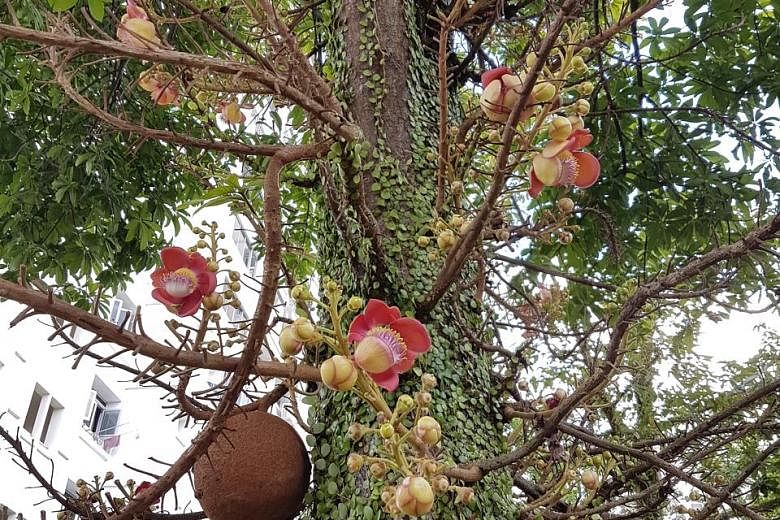Don't touch, don't smell
I came across this unusual tree in my neighbourhood. What is it and is it poisonous?
Angie Yeow
The tree is botanically known as Couroupita guianensis, also called Cannonball Tree because of its large, round fruit.
It exhibits a unique flowering habit called cauliflory, where its heavily scented flowers are produced on the main trunk. Avoid smelling the flowers directly as the pollen may cause allergic reactions. Touching the pulp of the tree's broken open fallen fruit may also lead to irritation.
Timber used for writing boards
What plant is this? I planted some of its seeds, though I do not know which plant it came from.
Aneza Sulaiman
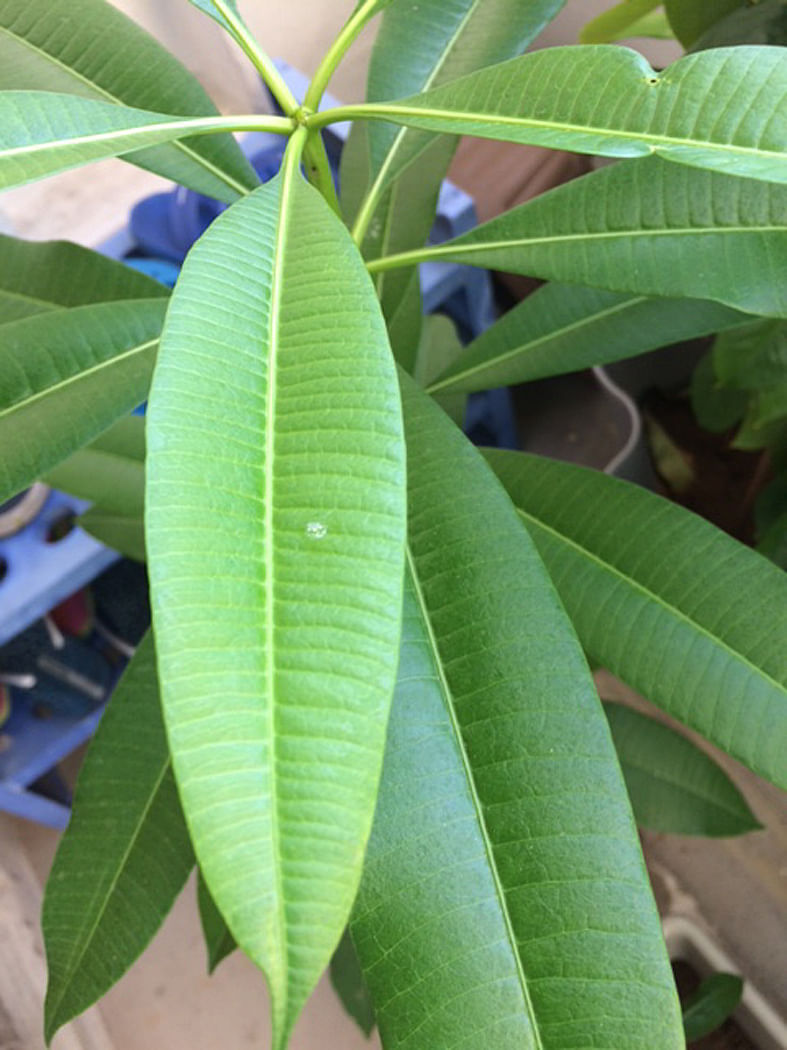
The young plant could be a species of Alstonia. It could be Alstonia scholaris, a common tree that is planted in Singapore's local parks and along the streets here. Its flowers have a strong scent.
Also called the Indian Pulai or Blackboard Tree, its timber has been used to make writing boards for school children.
As its seeds are dispersed by wind, your young plant probably grew from a seed that had landed in the flower pot.
Tip: Crotons are flamboyant in the sun
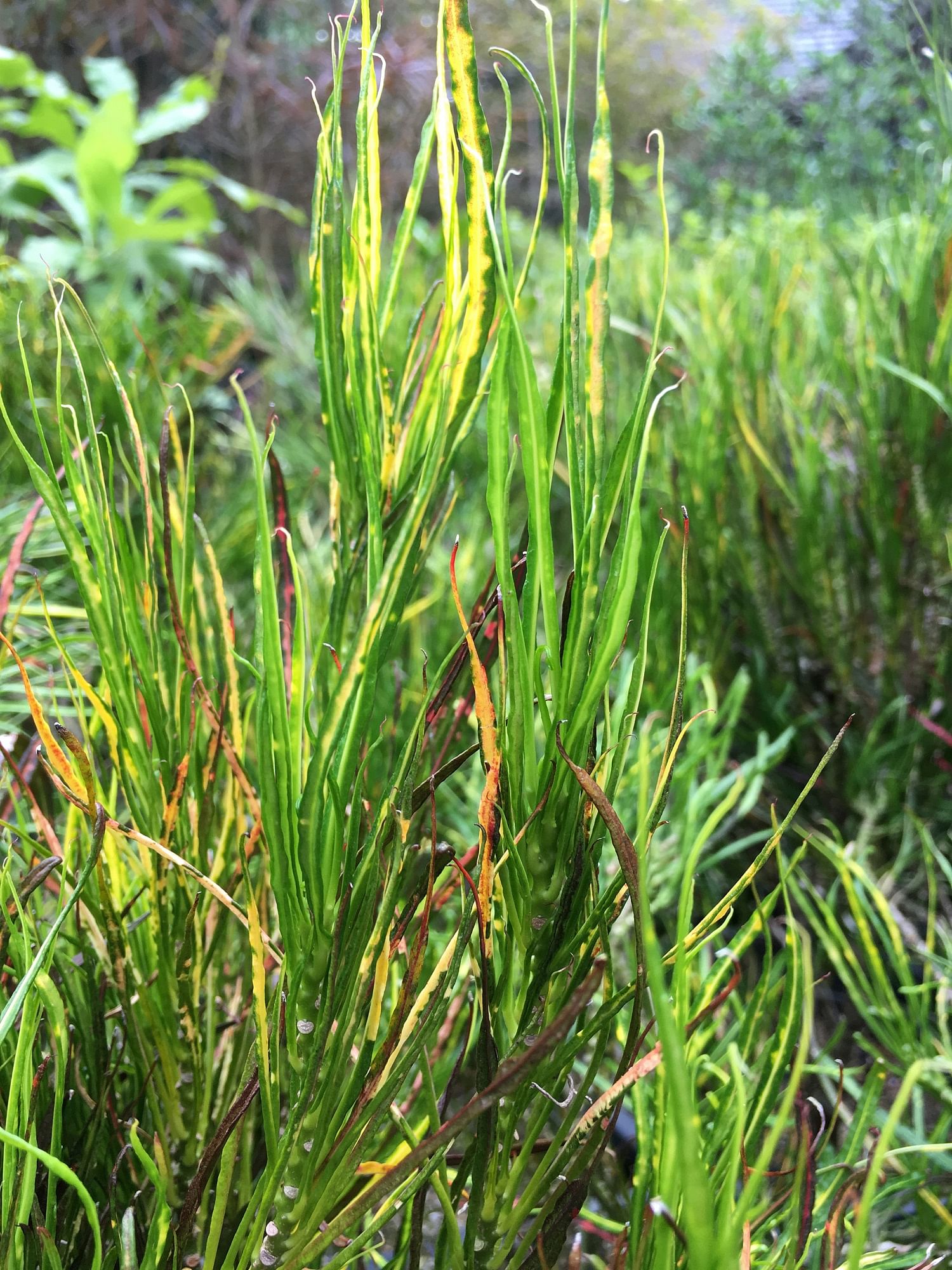
Unlike other Crotons which have broad leaves, Codiaeum variegatum (above), or "Picasso's Paintbrush", is a cultivar with very fine leaves.
This small shrub, which grows slowly, can be grown in containers or in the ground outdoors. The soil should be moist and well-drained. Crotons do not tolerate wet feet in waterlogged conditions.
They do best under direct sunlight, which brings out the flamboyant colours of their foliage.
Sky Fruit is edible
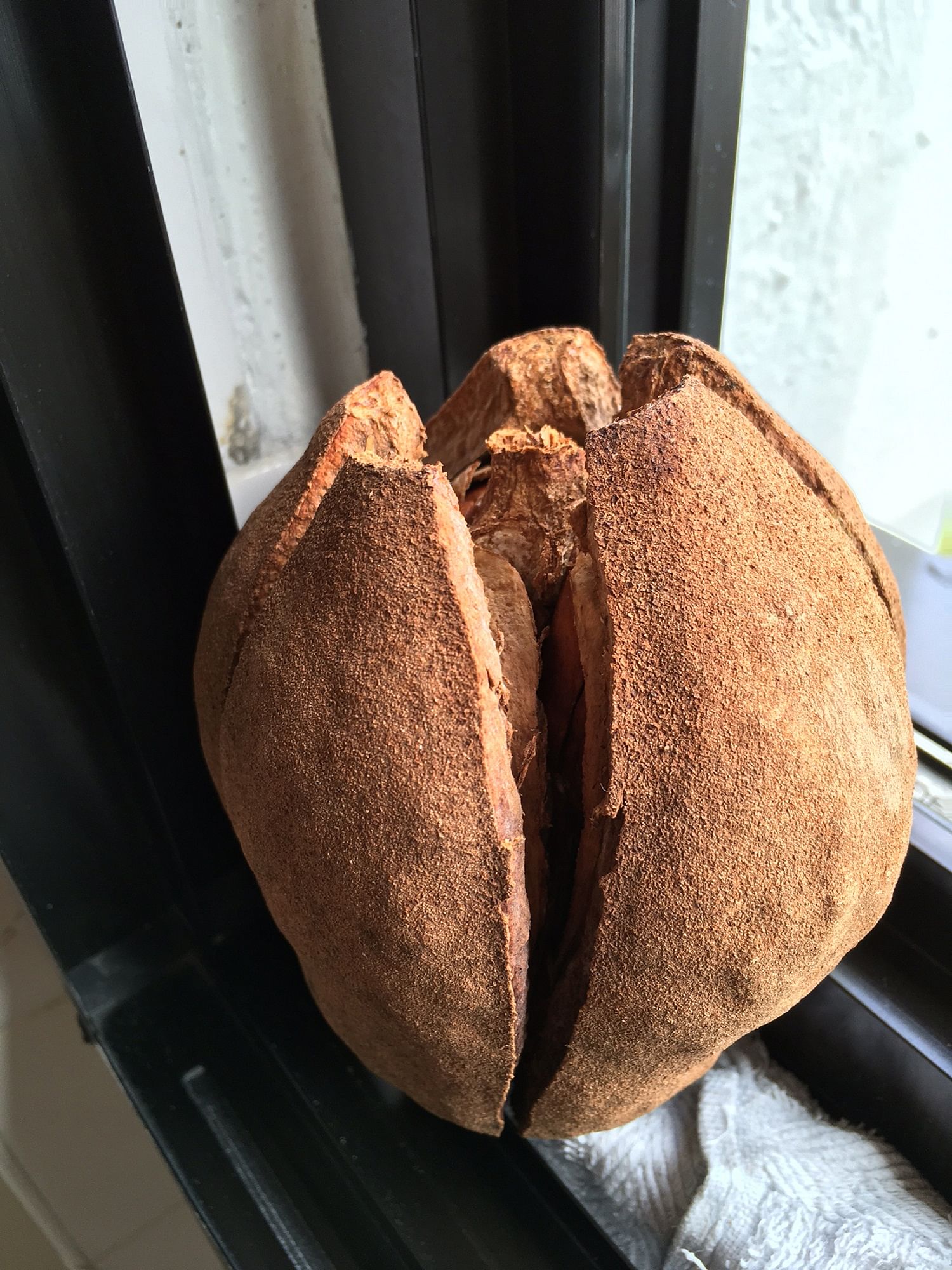
Is this plant edible and does it have health benefits?
Joseph Koh
The fruit (above) in your picture is likely produced by a tree that is botanically known as Swietenia macrophylla.
Its common name is Broad- leafed Mahogany, though it is known in Singapore as Sky Fruit tree. Its fruit, which have hard rinds, grow towards the sky.
This tree species can be found in parks and along streets here. Its seeds are sold in some medical halls as they are said to improve blood circulation and treat diabetes. These medical claims are mainly anecdotal and have yet to be substantiated with proper medical studies.
Crown of Thorns likes it sunny
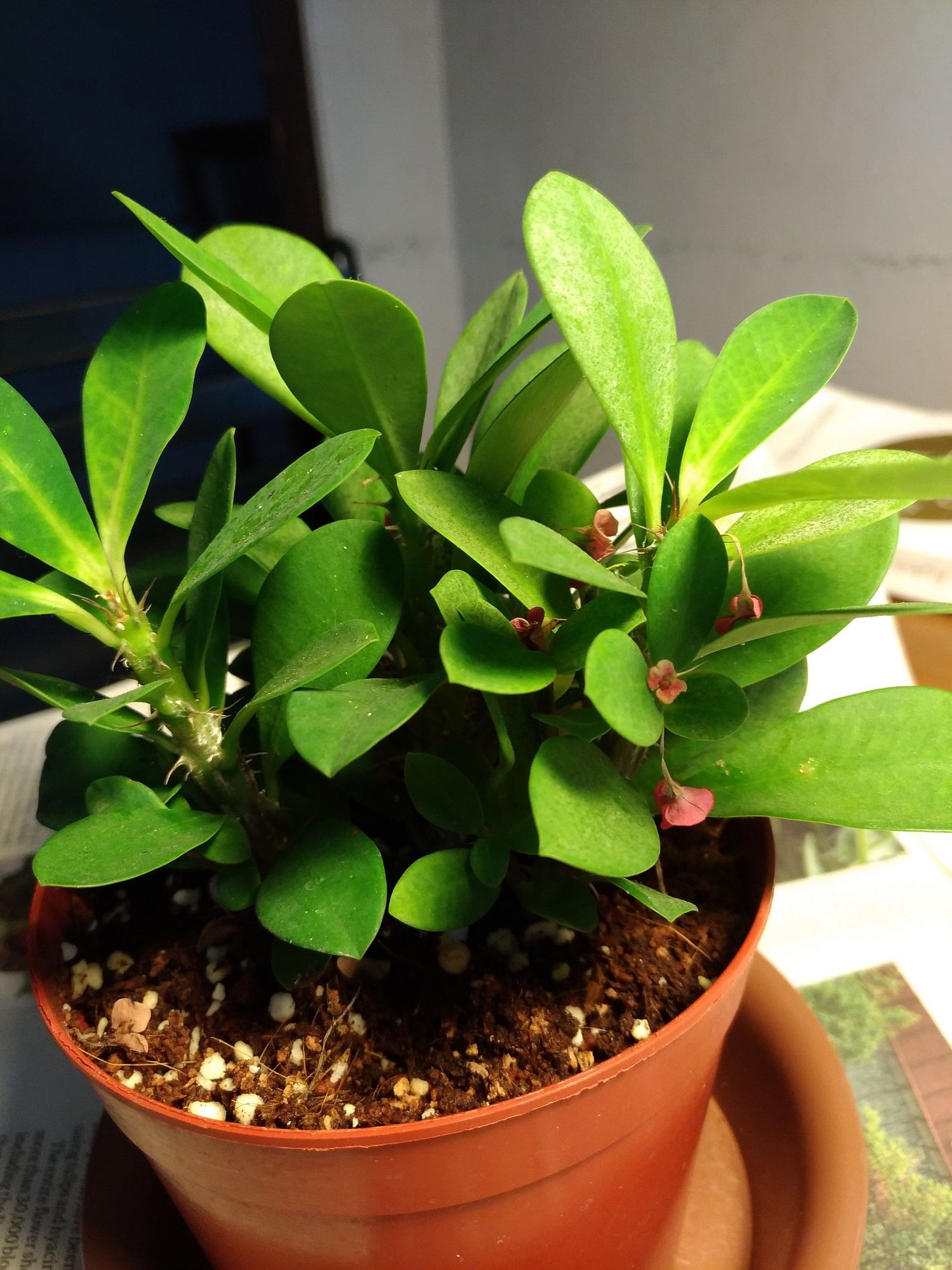
What plant (above) is this? It flowered once, with tiny red blooms, but there were none after that. How do I get it to flower?
Jasmine Suen
The plant is probably a Euphorbia milii or its hybrid. It is commonly known as Crown of Thorns because of the many sharp spines on its stems.
The colourful parts are called bracts, or the plant's modified leaf. To promote flowering, this plant should be placed in a sunny spot where it can receive at least four hours of direct sunlight daily. An overly shady spot will cause it to grow poorly and not flower.
You might need to change the soil mix. It looks like it is retaining too much water. This plant is best grown in a gritty soil mixture that drains excess water quickly. This ensures that the root zone dries fast, preventing root rot.
•Answers by Dr Wilson Wong, a certified practising horticulturist and founder of Green Culture Singapore (www.greenculturesg.com). He is also an NParks-certified park manager.
•Have a gardening query? E-mail it with clear, high-resolution pictures of at least 1MB, if any, and your full name to stlife@sph.com.sg
